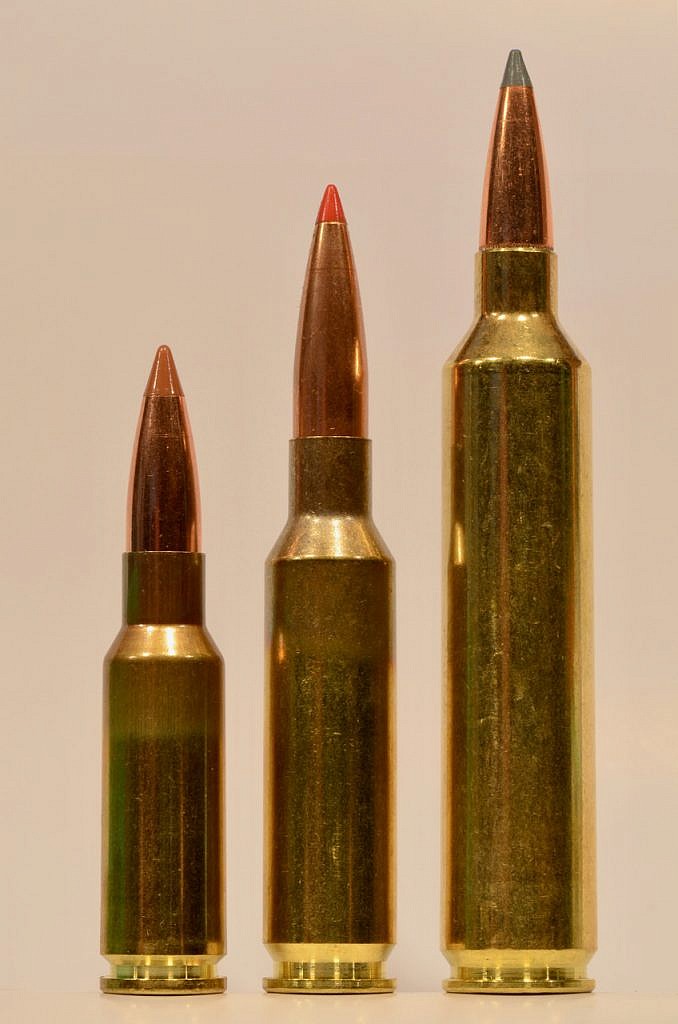
by Terry Wieland
Way back in 1988, I bought a Parker-Hale chambered for the venerable 6.5×55 Swedish Mauser, not because I wanted one, but because there was no .270 available. Two things happened immediately: One, I became enamored of 6.5mm cartridges generally, and two, found that you could not give away a magazine article about anything in 6.5mm, or .264, or any of its other aliases.
“Americans aren’t interested in 6.5s,” I was told by a succession of editors, as I tried to hawk a piece about why the 6.5mm was the ideal diameter for a big-game bullet and probably long-range targets as well. So forget it I did — for a while — although not before carrying that rifle in Alaska on an unforgettable backpack hunt for Dall sheep.
It’s now 33 years later, and guess what? You can hardly give away an article on 6.5mm cartridges because there are so many that editors who are not bewildered by the plethora are bored with reading about them.
Last week, I spent a few days in South Dakota attempting to keep the local prairie-dog population in check, shooting a variety of rifles from Legacy Sports. Among them were four different 6.5s: the Creedmoor, Grendel, ARC, and PRC. The Creedmoor, created by Hornady, is the runaway new-cartridge success story of the last 20 years — so ubiquitous now that one editor has forbidden me even to mention its name.

And those are not all. Other fairly recent 6.5s include the .260 Remington and the .26 Nosler, a host of semi-factory cartridges like the 6.5-300 Weatherby, and uncountable wildcats.
You may wonder why this is happening, since so many 6.5s already exist, with histories stretching back to the early 1890s. In America, the 6.5 has a twisted history, and to really understand the current situation, you need a bit of background. So here goes.
Ferdinand Ritter von Mannlicher probably is the father of the 6.5mm. Early in the smokeless powder era, he determined it was the best diameter for a military cartridge, preferably firing a 150-grain bullet (more or less) at 2,400 fps (more or less). Over a period of about 20 years, Steyr manufactured a variety of 6.5s (Greek, Dutch, Carcano) including the famous 6.5×54 Mannlicher. Mauser also created a few, including the 6.5×55 Swedish.
It probably would have taken off in America but for one thing: In 1913, Charles Newton necked down the .30-06 to 6.5, called it the .256 Newton (English usage, which is bore rather than groove diameter) and put it on the market. Thus, that caliber was already taken a decade later when Winchester wanted a sexy high-velocity number of its own. They necked the .30-06 down to .270 instead (.277 vs. .264 inches). Their .270 became as dominant in the 20th century as the 6.5 Creedmoor is today.

This was followed by a variety of voices calling in the wilderness, extolling the 6.5 to little effect. In 1958, Winchester tried its big belted .264 Magnum. It flopped. Around 1965, Remington tried the 6.5 Remington Magnum, a compact little belted number. It flopped. A-Square tried to legitimize the 6.5-06 wildcat. It went nowhere. Then came the .260 Remington. Same thing, really. It then occurred to Hornady it was pointless to try to popularize a cartridge like the 6.5×55, not because it’s not a very fine cartridge, but because it’s hamstrung by SAAMI ballistic limitations that are, bluntly, anaemic. Anaemic for good reason, but still anaemic.
By starting with a clean slate, Hornady could dictate the rifling twist rate, to accommodate the long, heavy-for-caliber bullets that make the 6.5 great, and give it the necessary velocity at modern-day pressures without worrying about old military rifles coming apart.
In actual fact, there is nothing the 6.5 Creedmoor can do that the 6.5×55 can’t also do, given the same conditions, and in fact the 6.5×55 can be loaded to higher velocities. If I had to liken the Creedmoor to any cartridge, it would be the wildcat 6.5-250 Savage Ackley Improved. At any rate, the Creedmoor’s richly deserved success has led to a feeding frenzy of cartridge development — up, down, and sideways — as they are modified to fit this or that action, and be optimum for this or that bullet weight.
There is no sign of it ending anytime soon. Nor should it. The 6.5’s time to shine is long overdue.
______________________________________________________________________________
Gray’s shooting editor does not exactly feel like a prophet, but at least he’s been proven right. History records that one prairie dog went to his reward at 427 (measured) yards, at Wieland’s hands shooting a 6.5 PRC. It was not the first shot, or even the third, but that was not the rifle’s fault.
